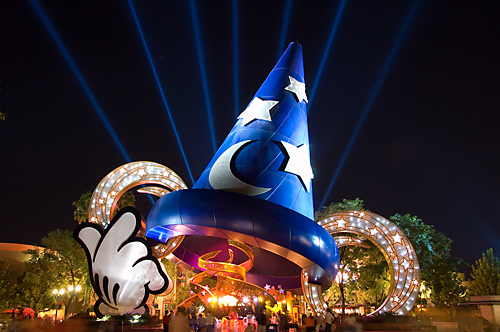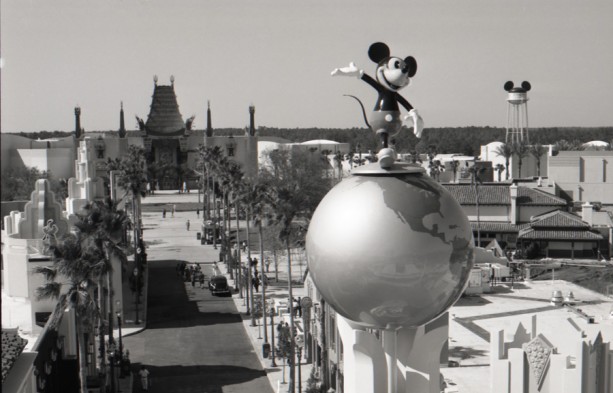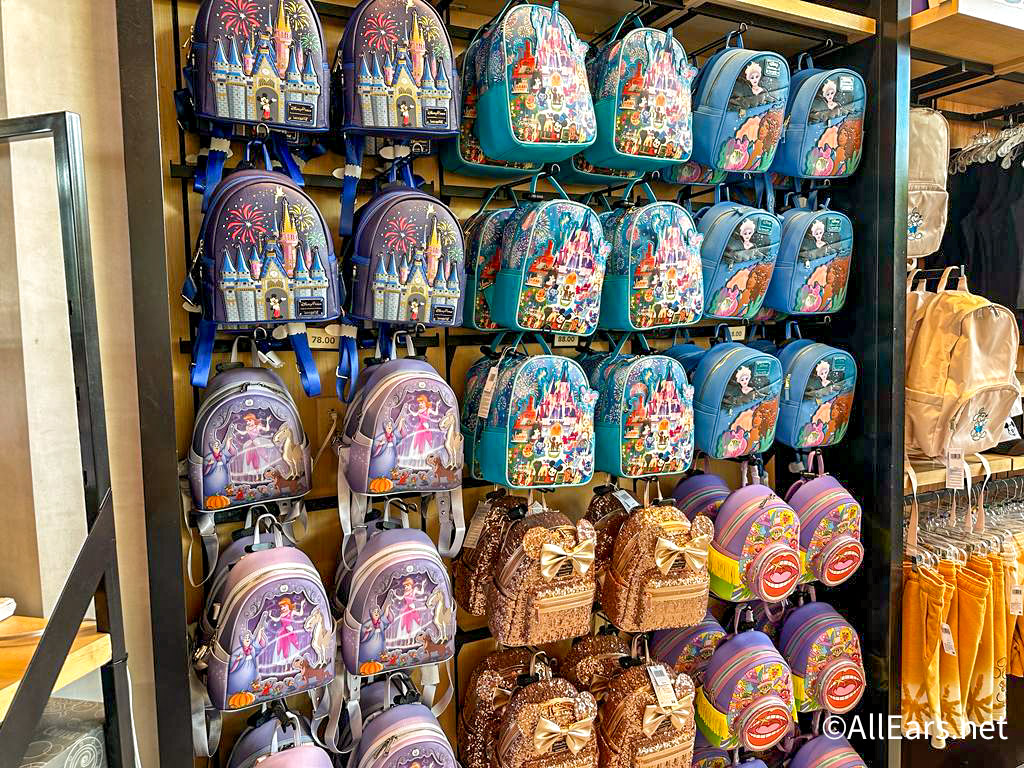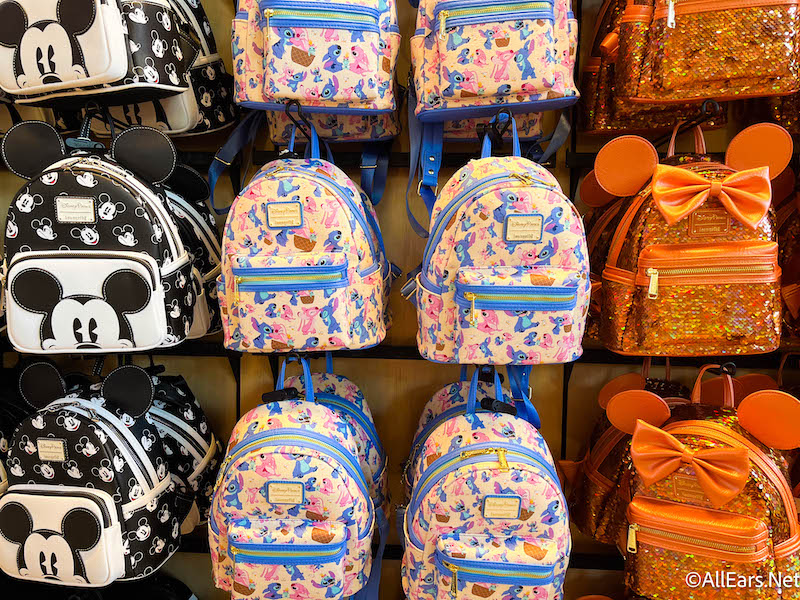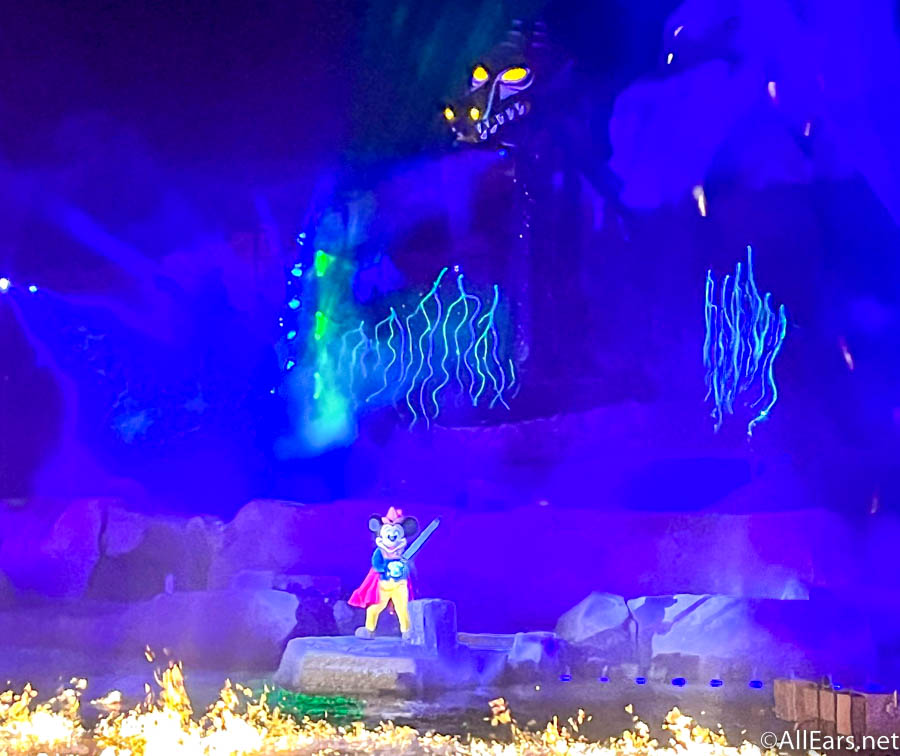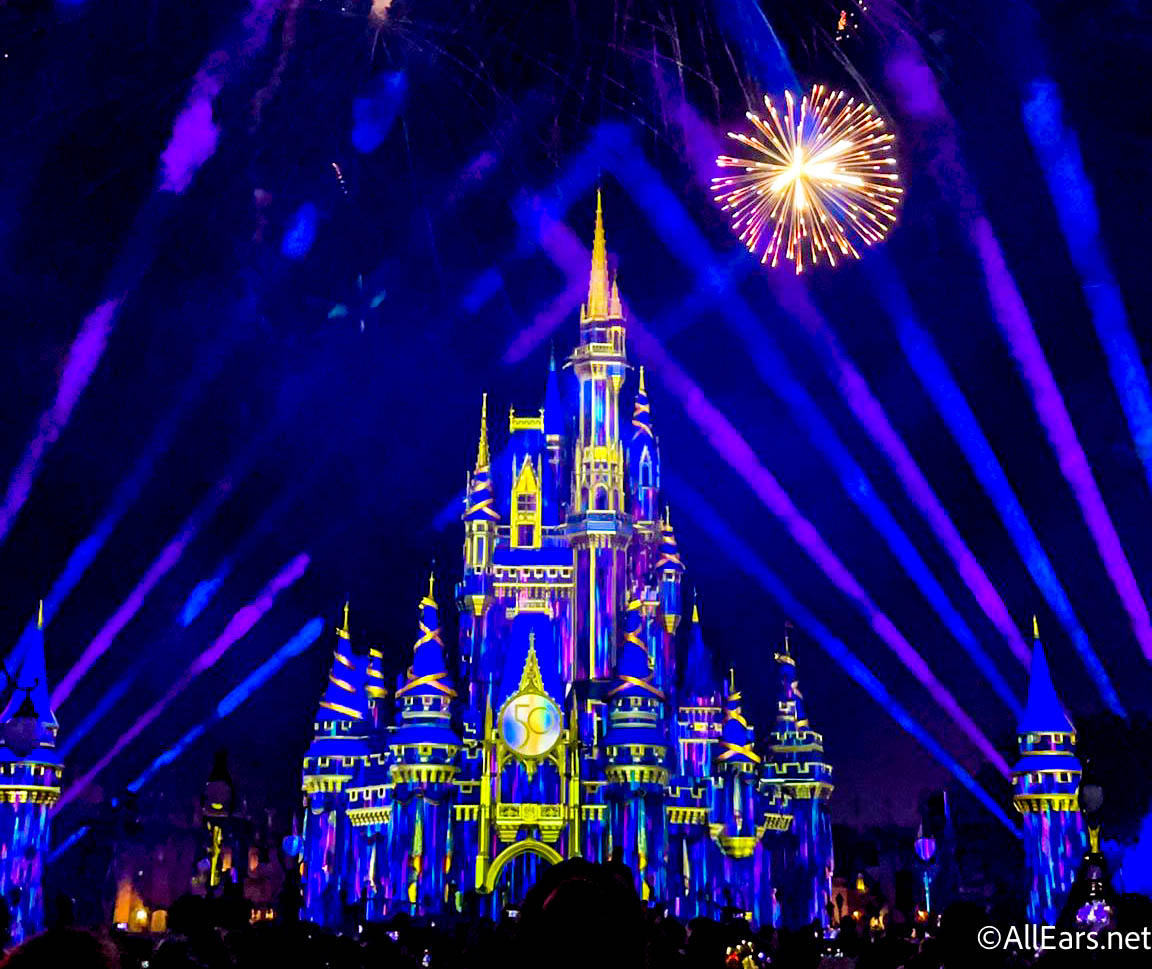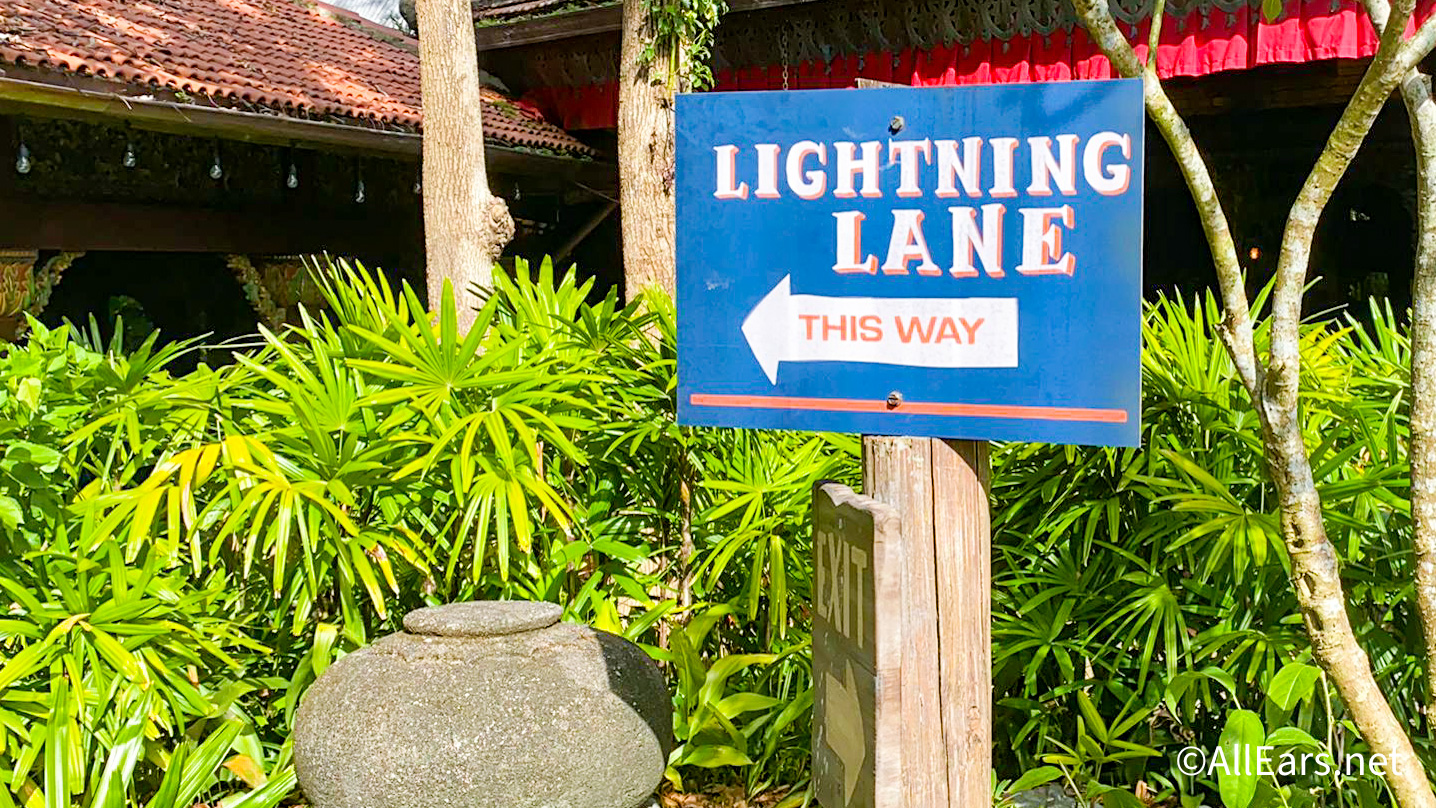“MEET THE AUTHORS” Series: Disney Archivist Dave Smith!
Feature Article
This article appeared in the April 8, 2003, Issue #185 of ALL EARS® (ISSN: 1533-0753)
ALL EARS® continues its occasional series: Meet the Authors! These interviews give you an opportunity to get to know the authors of various Disney-related books, as well as ask them questions directly.
This month, ALL EARS® visits with Dave Smith, Archivist for the Disney Company. We last spoke with Dave in ALL EARS® Issue #68, 1/15/01.
Dave Smith began his long relationship with the Disney Company in 1967, when he spent a year researching an in-depth bibliography on Walt Disney. When the Disney family and Studio management decided to do something to preserve Walt Disney's papers, awards and memorabilia, it was natural for them to contact Dave to do a study and make a recommendation, which established the guidelines and objectives of the Archives. The project eventually expanded to encompass not only Walt Disney, but the history of the entire Disney organization, and Dave was selected as archivist. In the years since the Archives was established, it has come to be recognized as a model among corporate archives in the country. Dave is now regarded as THE final authority on matters of Disney history.
Dave, who recently celebrated his 32nd anniversary with the Disney Company, has written extensively on Disney history, with a regular column in Disney Magazine and numerous articles in such other publications as Disney News, The American Archivist, and The California Historical Quarterly. Dave is the author of Disney A to Z: The Official Encyclopedia (updated 1998), and with Kevin Neary he co-authored The Ultimate Disney Trivia Books 1, 2, 3, & 4. His book Disney: The First 100 Years, co-authored with Steven Clark, was published in 1999 (with an updated edition in 2002). He compiled The Quotable Walt Disney, a collection of Walt Disney's quotes, in 2001. He has written introductions to a number of other Disney books, and often lectures on Disney subjects.
During the month of February, ALL EARS® subscribers had the opportunity to send in questions for Dave. On behalf of everyone here at ALL EARS®, Welcome Dave!
-o-o-o-o-o-o-o-o-o-o-o-
Maria K., New York: Are there any remaining "classic" stories that Walt had wanted to animate but never got the chance?
DAVE: There were actually hundreds of stories that Walt Disney considered making into films, but perhaps the key ones for animated features were Don Quixote, Chanticleer, and Hiawatha. Quite a bit of preliminary artwork was done on each of those stories. (Editor's Note: Chanticleer is the rooster from the book "Chanticleer and the Fox" by Barbara Cooney.)
-o-o-o-o-o-o-o-o-o-o-o-
Paula Dale: I have been a Disney fan for years, dating back to the original Mickey Mouse Club. I recall some teenage guest stars on the program, and I wondered if any of these became big stars later in life.
DAVE: Looking down the list of Mickey Mouse Club Talent Round-up Day guest stars in the 1950s, I found only a few names which had some fame, such as the Lennon Sisters and Bobby Brunner, who became a well-known movie composer.
-o-o-o-o-o-o-o-o-o-o-o-
Tom B., Indianapolis, Indiana: One of the great supervising animators at Disney in the '30s and '40s was a man named "T. Hee." What was his first name? [By the way, I don't expect you to remember me, but I had the great good fortune to meet you at WDW in September '99 during the Disneyana Convention. I was there as a guest of Tim Considine and Dave Stollery. I had maybe a billion questions to ask you, but became so nervous in the presence of "The Archive" that I became tongue-tied.]
DAVE: T stands for Thornton. But don't you think T. Hee is a much better name for a comedy writer? I have enjoyed the opportunity at Disneyana Conventions to meet Disney fans from all over the country.
-o-o-o-o-o-o-o-o-o-o-o-
Paulette K., Ohio: My favorite Disney character is Tigger. I've noticed that he comes in so many different color variations. Sometimes he has a black nose, sometimes pink or brown. Also, his belly is sometimes white, beige or yellow. What are the original colors for Tigger? Why are there so many different variations? Are some Tigger collectibles more valuable than others (i.e., those with black noses instead of brown or pink)?
DAVE: When it comes to merchandise of our characters, particularly plush dolls, you will often see a lot of variation in shades of color in the characters' costumes, and even on the characters themselves. Some manufacturers might think Dumbo looks better in a blue hat and others might think red was better. The color palette for a film itself changes, depending whether the character is in sunlight, indoors, in shadow, in a nighttime scene, etc. People have cels of Tramp from "Lady and the Tramp", for example, where the character is a definite gray — in other cels he is brown. I don't think that coloration would have anything to do with value of Tigger items.
-o-o-o-o-o-o-o-o-o-o-o-
Diane: We have a wonderful original painting of the castle at Disneyland; the castle itself in the center and then different angles of it surrounding it towards the corners. The painting is large, measuring approximately 5 feet by 4 feet. By looking closely, you can see light pencil marks and, of course, brushstrokes. It says "Disneyland" in large letters as well. It is unsigned. I purchased it here in Oklahoma in 1993 at the estate sale of someone who had obviously worked at Disneyland at some time. I wish I had been able to purchase more of what they had. It has hung in my daughter's room her whole life and we would love to someday be able to find out the origin of it, as well as its value. Do you have any suggestions how we could go about it?
DAVE: If you want to send me a photograph of it, I will be glad to take a look. I assume it is not signed. Is it an original painting (watercolor, oil, etc.) or a lithograph? We did sell a lot of park marketing art at previous Disneyana Conventions, so it may have come from there. Our address is Walt Disney Archives, 500 S. Buena Vista St., Burbank, CA 91521-3040.
-o-o-o-o-o-o-o-o-o-o-o-
Laura B., Vermont: I loved the Disney version of Rodgers & Hammerstein's "Cinderella" starring Brandy. Do you know if a soundtrack will ever be released?
DAVE: I do not find that a soundtrack of this production ever came out. This may mean that Disney did not acquire rights to do so from the Rodgers and Hammerstein Trust. If it has not come out by now, it probably never will.
-o-o-o-o-o-o-o-o-o-o-o-
Krisanne W., Washington: While on a trip to Sedona, some friends were told by their guide that Walt's inspiration for the shape of Mickey's head came from the cactus in the area. Is there any truth to this?
DAVE: (Dave laughs.) I really doubt it. But cactuses (and tomatoes, and potatoes, and driftwood, and any number of things) have been found shaped like Mickey.
-o-o-o-o-o-o-o-o-o-o-o-
Chris J., Florida: What brand of cigarette did Walt Disney smoke?
DAVE: Gitanes, a French brand.
-o-o-o-o-o-o-o-o-o-o-o-
Gregory M., Florida: I have a couple of questions involving music at the parks. First, I was always curious to know what music was featured on the old Channel 10 in the WDW hotels in the '80s and maybe early '90s. If I am not mistaken, this was the information channel that featured information about daily events at the parks. Who composed the music? What were the titles of the pieces? Is the music available for purchase? I have gone to numerous Disney music fan websites and everyone is stumped by my question, even though they also remember this music. I'm sure Dave can find the answer! Who composed the background music when entering Epcot (some of which still plays at the parks)? This music features instrumental selections from various Future World attractions. Finally, what was the reasoning for removing the "Center" from Epcot "Center?"
DAVE: Actually, Dave cannot find the answer! It was our Walt Disney Imagineering division that put together the various soundtracks for the parks, and they have decided that they cannot release those listings for proprietary reasons. When Epcot was first built, many people still remembered Walt Disney's original ideas for the park. Some of our executives decided that the park was only the Center of Walt's entire concept for Epcot, which encompassed the entire Walt Disney World property, so they decided to add the word to the park name. A couple decades later, Epcot in itself had become a household name, and it was felt the additional word was no longer needed.
-o-o-o-o-o-o-o-o-o-o-o-
Andreas B., Vienna, Austria: Some months ago I saw a German or Austrian movie from the 1950s where they had a German version playing of "It's a Small World". Any information about that?
DAVE: It would not have been in the '50s. The song was written for the New York World's Fair in 1964. I am not familiar with any movies after that which featured the song.
-o-o-o-o-o-o-o-o-o-o-o-
Brian M., Charlotte, North Carolina: On some of the early postcards of WDW, both of the pre-opening art variety and the early photo cards of the park, the Walt Disney World logo on the back (and in the case of the pre-opening cards also the logo on the front) includes a flag (pennant-shaped) with the word "FLORIDA" on it, presumably to promote awareness of the location of the new park and make sure folks didn't just think, "Oh, a Disney postcard… that's way out in California right?" I have two theories about why some have it and some don't:
Theory 1: The first pre-opening cards did not include the Florida flag and it was added later to promote awareness. Accordingly, the same logo was used on the first photo cards once construction was completed, but was phased out on later printings of these card.
Theory 2: Both logos were developed early on. The logo used on the cards depended on what was handy when preparing the image to go to the printer, so the Florida flag and non-flag card would have been issued at about the same time.
Evidence in support or refutation of these theories?
DAVE: I would guess it is your Theory 2. Of our pre-opening post cards (featuring artwork), three of the eight have the flag logo on the picture side. None have it on the address side. I do not find it on any of our later photo post cards. If you have later cards with the flag, it is possible that there were different licensees who handled the printing.
-o-o-o-o-o-o-o-o-o-o-o-
Tom N., Tennessee: I remember an episode of "Wonderful World of Disney" about a teenager's effort to get a car of his own. If I remember correctly, it was narrated by Kurt Russell. I especially remember a segment of that episode about a driving simulator which, to say the least, malfunctioned despite the instructor's frantic efforts to turn it off. It was perhaps the funniest Disney TV segment I have ever enjoyed. I think the episode's title was, "Dad, Can I Borrow The Car?" By any chance, has this episode ever been released on video? I would just LOVE to be able to see that driving simulator segment again! Thanks for your time!
DAVE: This does seem to be "Dad, Can I Borrow the Car?" The TV show was released on a Wonderful World of Disney video along with "The Hunter and the Rock Star" in 1986-87 and again in 1995-99. Sometimes you can find older Disney videos for borrowing at public libraries or at larger video rental stores. Also, they often appear for sale on eBay (there were two being offered when I just checked) and other Internet auction sites.
-o-o-o-o-o-o-o-o-o-o-o-
Mary Ann Miller: We need to get to the bottom of the "apartment question"! We have been told that Walt had a beautiful apartment built in Cinderella Castle for him and his family so that he could enjoy watching his creation while visiting the world. We can't seem to get verification that this apartment exists… So tell me, was there ever an apartment? If so, is it still there? Has anyone ever stayed in it? Is it used for anything at all?
DAVE: No, there was no apartment. Walt, of course, died in 1966, before the park was designed. There had been talk of an apartment for Roy and other Disney family members in the castle, but it was never built. Instead, the area was used for the park's telephone operators, and later for storage and for a "green room" for Magic Kingdom entertainers. The area is above the restaurant.
-o-o-o-o-o-o-o-o-o-o-o-
Jay R., New Jersey: I am always amazed at the number of films that run in almost every Walt Disney World attraction, from the Circle-Vision movies and the rear-projection film at the American Adventure, to the loops that create the talking heads at the Haunted Mansion. My question is this: On any given day, how many film projectors are running in the parks? What is the lifespan of any given print? How often do the films have to be replaced from wear and tear? Finally, are the prints made in Florida on the grounds of WDW, or are they made off-site from one or many different locations?
DAVE: According to Theme Park Productions at Walt Disney Imagineering, which is in charge of all films for the Disney parks, no one has ever counted how many films are running, but there are hundreds. Each film is replaced on a schedule according to attraction usage. All films are printed in California by specific vendors according to our special requirements.
-o-o-o-o-o-o-o-o-o-o-o-
Richard Murphy: I've read nearly every biography of Walt Disney there is. But one aspect of his life is rarely covered. Did he have any particular religious affiliation? His rural background seemed to give him something of an earthy sense of humor, but he also seemed to be a reverent man, as well (who can forget Ave Maria from "Fantasia?"). I seem to recall that a Roman Catholic priest presided at the dedication of the Buena Vista Studio. Do we know who presided at his memorial? Was he a member of any congregation?
DAVE: Walt grew up in Chicago a member of the Congregational Church, and was, in fact, named after his church's minister, Walter Parr. Later in his life, Walt was not a churchgoer, but he was religious. Both his daughters attended church-sponsored schools, one Roman Catholic and one Christian Science. Quite different, huh?
-o-o-o-o-o-o-o-o-o-o-o-
Jim Tony F., Kentucky: My question is about Space Mountain. We have an argument at work about what the cars were like in 1985.
DAVE: Space Mountain originally opened at the Magic Kingdom in Florida in 1975 with four-passenger rockets (two rockets made up a rocket train). The rockets were redesigned a decade later to hold three passengers instead of four.
-o-o-o-o-o-o-o-o-o-o-o-
Teresa A., Kansas: Can you tell me why there is a sign above Pooh's door that reads Mr. Sanders? Who is Mr. Sanders?
DAVE: That relates to A.A. Milne's original books. Pooh simply put the sign, which he found, over his door.
-o-o-o-o-o-o-o-o-o-o-o-
Chris S., California: I know in the past you have stated here and in the Disney Magazine that Mickey and Minnie are not married. However, according to the Encyclopedia of Walt Disney's Animated Characters by John Grant (for which you wrote a foreword):
"Walt confounded the hypothesis by writing in Film Pictorial [30 September 1933] that, 'In private life, Mickey is married to Minnie. A lot of people have written him asking this question, because sometimes he appears to be married to her in his films and other times still courting her. What it really amounts to is that Minnie is, for screen purposes, his leading lady. If the story calls for a romantic courtship, then Minnie is the girl; but when the story requires a married couple, then they appear as man and wife. In the studio we have decided that they are married really.'" I have also heard (but have not found evidence to substantiate this fact) that in an interview either an animator or Imagineer had been quoted saying that if anyone asked Walt if Mickey and Minnie were married, Walt would answer, as far as he was concerned they were married. So I guess that question would be, who is correct?
DAVE: That book was written by an Englishman, and the article he cites was from an English magazine, not written by Walt. Walt would not have approved of the author writing that.
-o-o-o-o-o-o-o-o-o-o-o-
Terry Stiteler: I remember being able to purchase bottles of "pixie dust". I'm not sure if this was an item available only at the parks or also at The Disney Store. I haven't seen it in quite some time. Do you know anything about it?
DAVE: Yes, pixie dust, i.e., glitter of varying textures, was sold in little bottles in the theme parks for many years.
-o-o-o-o-o-o-o-o-o-o-o-
Gary R., California: How often did Walt and/or any Disney family member stay overnight in the Disney private apartment over the firehouse in Disneyland? What are the chances of the Disney Channel hosting a special "Disney Antiques Roadshow" where people can bring and display heirloom Disney souvenirs?
DAVE: According to family members, Walt did not stay overnight in the "apartment" very often. It was essentially just a sitting room with bathroom, though the two couches did pull out to become beds. He spent several nights there when Disneyland first opened, because he was so involved in getting the place running smoothly. Regarding the "Antiques Roadshow" version, I doubt that Disney Channel would want to do that, since they have changed their primary orientation to the "tween" years.
-o-o-o-o-o-o-o-o-o-o-o-
Deb K., Colorado: In "Beauty in the Beast", how old is the prince when he meets the enchantress? If he is supposed to be 21 when the spell breaks, and Lumiere sings that "for 10 years we've been…" could he really be 11?
DAVE: Well, unless magic aged him slowly, the age of 11 seems right. However, since he isn't pictured that age, I would guess that magic was involved and he was in his late teens.
-o-o-o-o-o-o-o-o-o-o-o-
Amanda P.: My husband and I have always wondered how some of the original artwork you see being bought and sold got out of the company's collection. We know Mr. Disney would give away cels — there is a lovely private home that was turned into a museum here in New Orleans, that features a handful of cels in one hallway, all of them personal gifts from Walt Disney to the owners. But did he also give away pre-production artwork? For example, how could the Gustav Tenggren original drawing for the Snow White movie poster end up in a private collector's hands? I saw that particular piece being shown off by its new owner on television in the early '90s, and have always wondered how it got out for public sale.
DAVE: In the early days of the company, less care was taken with the artwork. Some was given away, some was thrown away. Artists often kept examples of their own art, and it becomes available in their estates after their deaths. It wasn't until Disney art became really collectible in the 1970s that the company became much more careful in ensuring that the artwork was maintained.
-o-o-o-o-o-o-o-o-o-o-o-
Nicholas S., California: Dave, I'm one of those persons who's interested in arcane Disney historical details — things like, "What was the cost of a tower room at the Contemporary Resort in 1984?", or "What were the names of the various WDW park admission media in 1991?" Is this sort of information recorded in the archives somewhere, or is this too far into the "extreme trivia" category?
DAVE: Well, we sometimes have such information and it is easily accessible. Other times we have it, but it would take many hours of research to ferret it out. And, of course, in other cases, the information is just not available. In your particular examples, in 1984 a tower room in the Contemporary Resort was $130. In 1991 for admission, you could get a one-day pass for $31, a 4-day for $104, a 5-day for $135, or an annual passport for $180. This information is courtesy of Steve Birnbaum's annual guides, which have been published since 1983.
-o-o-o-o-o-o-o-o-o-o-o-
Shawna M., Georgia: Does Disney have an official definition of a "Hidden Mickey"? While at Disney World with my father in November 2002, a Cast Member at the American Adventure in Epcot pointed one out to us in a painting, but said that it was not "official" because it wasn't symmetrical. We wonder what the qualifications actually are.
DAVE: No, there is no official definition, or list, of what might be called Hidden Mickeys. But, one could say that a Hidden Mickey has to have been placed in the attraction on purpose by the designer, and not be just a happenstance grouping of three circles. None appeared until the late '80s.
-o-o-o-o-o-o-o-o-o-o-o-
Bill L., Florida: I have heard the WDW laundry kicks out 115 pounds of dryer lint per day. What do they do with it? What is the maximum number of guests allowed in each of the parks per day? How many turkey legs are sold each year?
DAVE: Fascinating questions, but not ones where the Archives would have answers. The parks do not publicize their maximums, which can change from season to season depending which attractions are operating, how many cast members are on duty, and other factors.
-o-o-o-o-o-o-o-o-o-o-o-
Dan Bernay: Can you tell me all the words of the theme song to the Spin & Marty Show? I'll be a Blue Nose Gopher!
DAVE: I am not sure what song you are referring to as the "theme song." Generally we cannot provide copies of sheet music for copyright reasons.
-o-o-o-o-o-o-o-o-o-o-o-
Keith Iler: We in the Southeast Michigan Chapter of the NFFC The Club for Disneyana Enthusiasts, would love to have Dave Smith at one of our meetings. We believe we have the largest collector of Disneyana in the world in our club, but the gentleman can't fly due to an injury… It would be a great pleasure to all in the club if we could get Dave Smith here in Michigan for a visit to some real Disney enthusiasts. I know this is just about impossible, but I would like to ask if he could make it and if not we will understand totally. Thank you for your kind indulgence on reading this most unusual request.
DAVE: Thanks so much for the invitation. Are you willing to pay my travel expenses? (Dave smiles.) Disney does not pay to send me on trips to such things, though I have occasionally managed to attend a local NFFC chapter meeting while on vacation or on a business trip — this has happened in Orlando, the San Francisco area, Atlanta, and Seattle in the past. I will actually be driving across the country on vacation in May, and be near Michigan, but not in it, at the end of May. Sorry, my schedule does not allow for a detour on this trip.
-o-o-o-o-o-o-o-o-o-o-o-o-
ALL EARS® thanks everyone who sent in questions for Dave Smith — it made for a very interesting read! We especially thank Dave for kindly answering as many questions as he could.
By the way, Dave asked ALL EARS® to be sure to mention that the supplement to Disney A to Z is now available online, updated monthly, at http://disney.go.com/disneyatoz/read/dave/
Related AllEarsNet Link:
Meet the Authors: Dave Smith, ALL EARS® Issue #68, 1/15/01: http://allears.com/btp/authors_ds.htm
-o-o-o-o-o-o-o-o-o-o-o-
Editor's Note: This story/information was accurate when it was published. Please be sure to confirm all current rates, information and other details before planning your trip.





